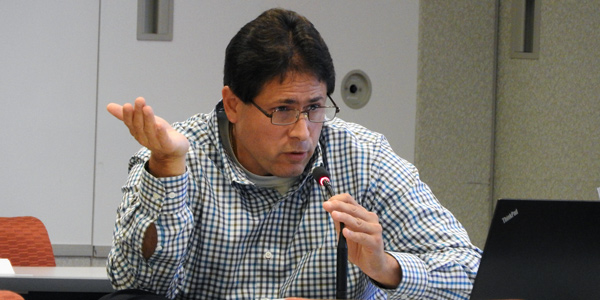VALLEY FORGE, Pa. — The preliminary day-ahead scheduling reserve (DASR) requirement for 2018 is 5.29%, PJM’s Tom Hauske told the Operating Committee last week. The requirement is calculated for each season by combining the average of the seasonal load-forecast errors and the forced-outage rate, both of which dropped about 0.1% for the 2018 calculation.
The final value won’t be known until the data from this month are included, Hauske said. PJM staff will return next month to seek endorsement of the requirement, which is down from this year, when it was 5.48%.
Grid Operator Communications Changes Spark Debate

PJM’s Chris Pilong announced proposed Manual 13 changes that would update the DASR requirement and ease the requirements for calling hot weather alerts in the spring and fall.
The changes would allow such alerts at temperatures below the current 90-degree trigger during the spring and fall months when generation and transmission outages lower available capacity.
American Electric Power’s Brock Ondayko expressed concern with the change.
“I understand what you’re trying to do, but I have a concern about some of the ramifications by kind of making more liberal the circumstances that you would go into a hot weather alert,” he said.
“One of the challenges we wrestled with is we have a 90-degree trigger, and is there some other trigger — some other temperature — that makes sense? Unfortunately, there really isn’t,” Pilong said in response.
He noted days in September or October where the temperature nears 90 degrees and said there’s not a lot of historic data for “those unusual temperatures for that time of year.”
Ondayko disagreed with PJM’s perspective. “I think there are other ways that you could suggest that people have some reserve ready,” he said.
The manual changes also would delete redundant information and clarify the emergency procedures that trigger a performance assessment hour under the Capacity Performance rules.
Resilience in Operations

PJM’s Dave Souder, Brian Fitzpatrick and Marilyn Jayachandran explained how staff plan to incorporate the RTO’s focus on resilience into operations. Many of them deal with increased gas-electric coordination.
“We’re going to see more and more gas” generation, Souder said.
Fitzpatrick said PJM is analyzing the pipeline systems serving gas-fired units to identify critical infrastructure, understand where redundancies and limitations exist and “make sure there is enough gas scheduled to meet the requirements.”
Jayachandran explained PJM’s seasonal, monthly and ad hoc assessments of the system. PJM has developed procedures to factor pipeline issues into its operations.
“We would coordinate with generation owners and pipelines to come up with a plan to determine if the [unit] is able to swap to their dual-fuel” source or another pipeline.
Going forward, PJM will be continuing its gas-electric coordination and working with the Argonne National Laboratory on modeling the pipeline system.
— Rory D. Sweeney




